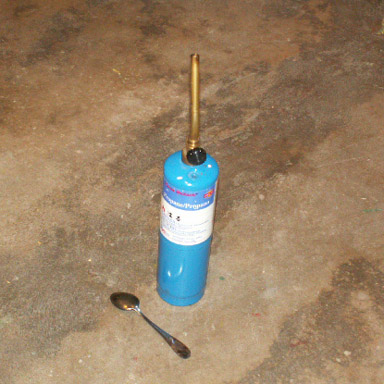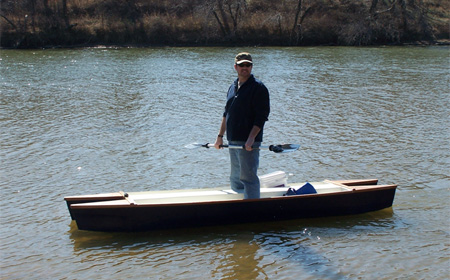By Dennis Vircks
Saltwater Wavewalk Kayak Fisherman, California
-“Four months have passed since I received my Wavewalk. I thought I would take some time to tell you how much I enjoy this fine little craft. I now have it rigged to my satisfaction and to what I believe is the ultimate “individual fishing platform.”

A spotted bay bass posing for Dennis’ camera.

-“Ready to start the long haul to the launching beach at Newport Harbor Back Bay. I used Scotty rod holder bases and Cabela rod holders. Installation was drilled holes with stainless steel screws, washers and cap lock nuts.”

-“Returning to landing beach in Huntington Harbor. I like the large hollow hulls because I can store my seven foot long rods, inflatable PFD, tackle, everything I need in them for transporting.”
-“Much of the enjoyment was in the actual rigging process. I wanted to get it right before I did any modifications and each decision took a lot of deliberation before fabrication and installation. I knew that I wanted to power the craft, I had to have rod holders and a fish finder, I also learned that I needed a paddle keeper and a way to transport it fully loaded on long sandy beaches. When I pull it fully loaded its gross weight is about 125 lbs. All of my rigging modifications were installed with drilled holes and stainless steel screws, cap lock nuts and washers.”

Close up on the wheel and part of the system that attaches it to the kayak. Read more
-“The uniqueness of the craft and the comments I receive about it are also enjoyable. Every time I take it out I get questions and comments. “What is that?” “Where did you get it” “How much did it cost?” I fish Newport Harbor and Huntington Harbor. These are very active kayak fishing locations and most of them envy me as I maneuver under power. One hard core “sit on
the topper” said to me, “That isn’t a Kayak.” I responded, “Well, maybe not to you because when you look at me you see that my feet and butt are dry.” I explained to him that after years of working and recreating in the sun I have become a melanoma farm and my skin can’t take long exposure to the sun or moist conditions. (I wear a hat, long sleeve UV shirt and jeans.) I switched topics to fishing techniques with our ultra light tackle. Since then, we have had several friendly fishing encounters. Last Saturday, as we were loading up to leave, I was astounded when he came over to me and said, “ya know buddy, I like your set up and I’m thinking about getting one.”
-“I needed a diversion from the stress of my occupation. Now that I have this fine craft rigged, I get to spend a few hours just concentrating on something important; the challenging relaxation of FISHING! This is what it is all about.”

-“I stern mounted a Minn Kota 30-30 trolling motor that is used for power assist during distance travel and exclusively for maneuvering when fishing.
My Minn Kota motor mount (I call it prototype #1) was fabricated out of one inch laminated hardwood. I contoured the edges and attached it to the top with eight stainless screws, washers and cap nuts. The lower portion of the mount is a laminated three inch by three inch cross member that is bolted through the hull with stainless steel lag bolts and neoprene washers on both sides. I coated it with Krylon Non-Skid Coating rather than paint.
Sadly, the lamination glue was not equal to the task and it has started to crack at the joints. It remains solid and functional but I will be replacing it after the fishing season. I am researching various materials to use.”

-“I made a removable holder for my Humminbird Piranha Max fish finder out of ¼” hardwood. I attached a scrap piece of one inch hardwood as a bottom extender. To use simply force the one inch extender into the first saddle recess. The friction holds it in place.”


A narrow foam mattress attached to small diameter tubes that fit in the saddle grooves – Dennis’ ingenious solution for extra comfort.

Dennis’ version of a ‘storm proof’ paddle holder. Read more



